Russia’s Ramjet Missiles Shattered a Historic Cathedral and Set Grain Stores on Fire
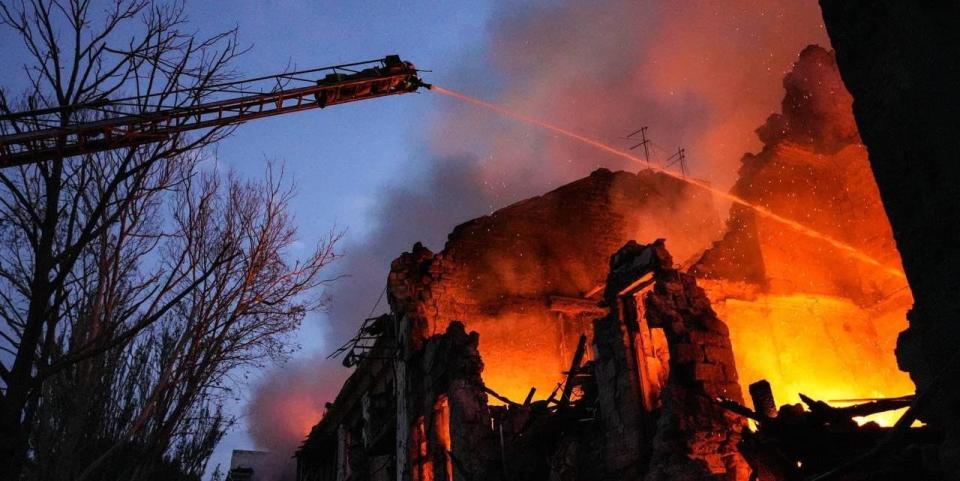
On Sunday, a volley of 19 Russian missiles plunged into the port city of Odesa, killing at least one civilian, injuring 22, and shattering the city’s Transfiguration Cathedral, a UNESCO World Heritage site. Consecrated in 1809, the cathedral was destroyed by the Soviet Union in 1936 and—following Ukrainian independence—rebuilt between 1999 and 2003, only to again apparently be attacked by Russian forces.

Nightly Russian missile strikes in the third week of July set ablaze over 60,000 metric tons (66,000 U.S. tons) of Ukrainian grain and other agricultural goods at Chornomorsk (near Odesa), according to local officials. The grain would have been enough to feed 270,000 people for a year, according to the World Food Program.
Despite the medieval-feeling behavior of demolishing cathedrals and setting food stores on fire, the recent attacks have been spearheaded by one of Russia’s most sophisticated modern weapons—the ramjet-powered P-800 Oniks cruise missile, designed to destroy U.S. Navy warships.
Though Odesa has been under continuous attack since Russia launched its full-scale invasion in February 2022, the renewed focus on the Black Sea port is connected to Russia’s refusal to renew a three-way deal (also involving Turkey) guaranteeing safe passage for Ukrainian and Russian grain ships.
Though anticipated, that refusal is also seen as retaliation for a July 17 strike on the Crimean Bridge by Ukrainian drone kamikaze boats. Russia targeted Odesa’s grain last summer as well—prior to the Black Sea Grain Initiative, which lowered global food prices by 23%.
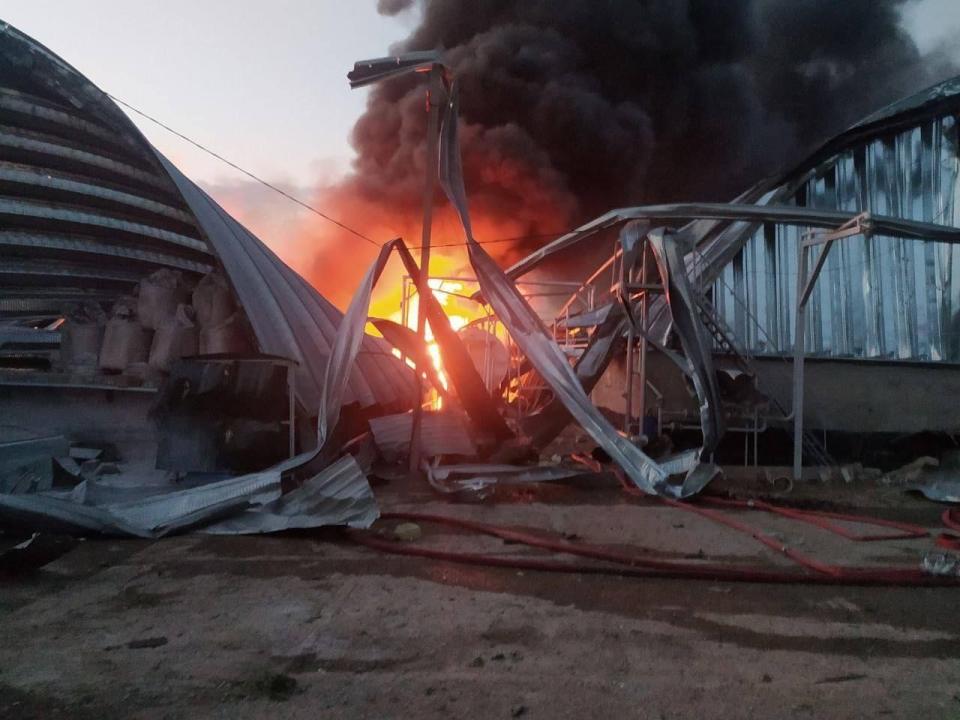
Ukraine supplies 10% of the world market for wheat, 15% of corn and 13% of barley. Should grain cease to flow out of the Black Sea, it may cause a jump in prices most felt by the world’s poorest countries, leaving hundreds of thousands at increased risk of dying from starvation.
Russia’s Oniks missile attacks—launched by land-based Bastion coastal defense batteries in Crimea—take place at 2-4 AM in the morning and are ‘padded out’ with Soviet-vintage Kh-22 missiles launched by Tu-22M bombers and Iranian-supplied Shahed-136 long-range kamikaze drones, which draw defensive fire away from the more costly missiles.
Supposed Oniks missile launches from Crimea at Odesa 😢 pic.twitter.com/S52ibC11ar
— Be brave like Ukraine 🌻 (@ukrbravery) July 19, 2023
Until recently, Ukraine’s air defenses have routinely downed over half of the munitions used in strikes on the Ukrainian capital—sometimes up to 80-100% of them. And indeed, the initial night attack by 21 drones and seven missiles on July 17-18 was wiped out by Ukrainian defenses.
But the following night, Russia surged 32 Shahed drones and 31 missiles (6 Oniks supersonic missiles, 8 Kh-22 supersonic missiles, one 1 Kh-59 subsonic missile, and 16 Kalibr subsonic missiles). Ukraine managed to shoot down or lead astray 13 of the missiles and 23 drones, but none of the Oniks or Kh-22s.
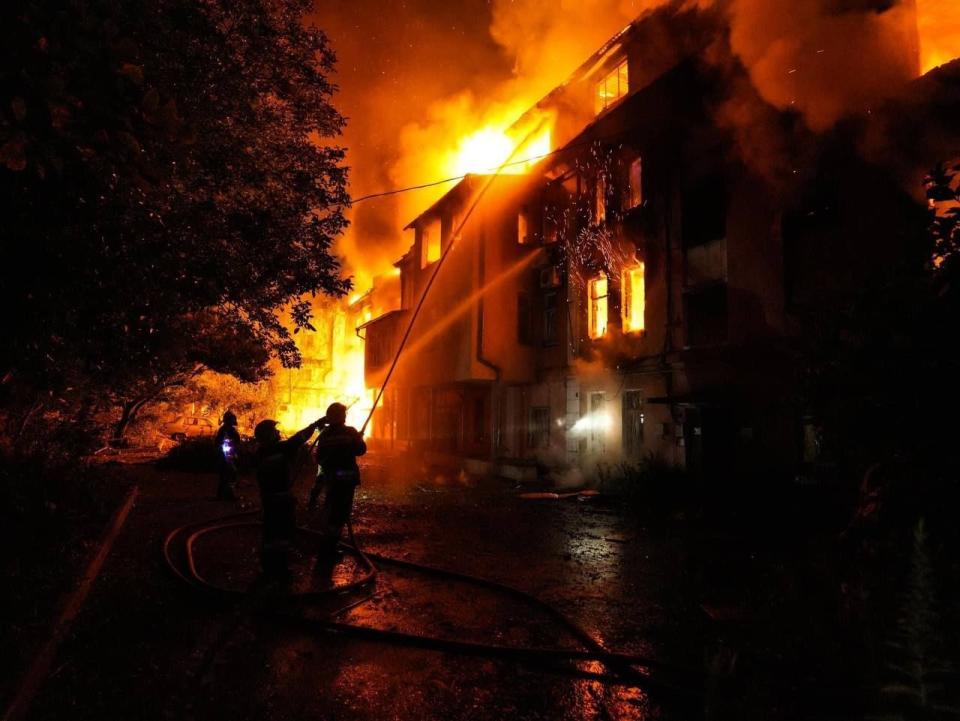
Then, on Wednesday and Thursday night, 19 more drones and 19 missiles (Iskanders, Oniks, Kh-22, and Kalibr) swarmed again towards Odesa and nearby Mykolaive. This time, Ukrainian defenses bagged only five. Yet more attacks followed on Friday.
Besides grain, peas, and barley, the strikes have damaged an oil terminal, an office building, a Chinese consulate, a suburban market, and 25 cultural sites in the city’s historic center. Fragments collaterally damaged apartments and warehouses, causing fires. At least one Russian strike on a grain store included a ‘double-tap’ attack, aiming to kill rescuers with a follow-up volley. Thankfully, they made it to cover in time.
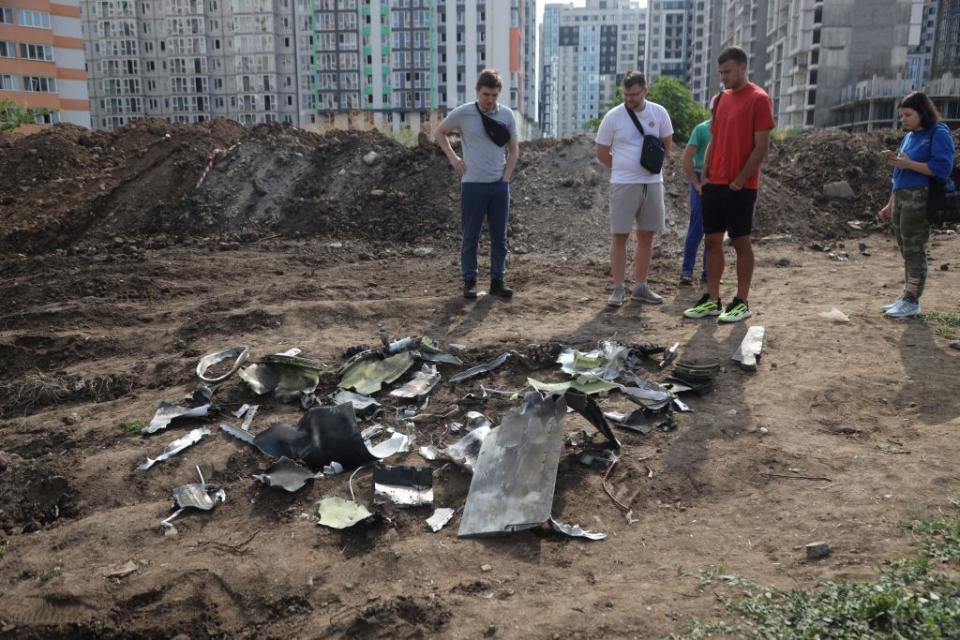
By Ukraine’s own admission, its Soviet-legacy air defenses in the region aren’t fast enough to intercept the Oniks missiles as they streak in at Mach 2.6. Ukraine’s only two operational Patriot batteries, which have been successful at batting away Russian supersonic missiles, are believed to remain in the capital region to the north.
Talking to @AC360 tonight about what we saw in Odesa tonight, be sure to watch the clip from our balcony shot by photojournalist Scott McWhinnie. W/ @sebshukla pic.twitter.com/5FYyDO307i
— Alex Marquardt (@MarquardtA) July 19, 2023
Ukrainian air defense operators shared screenshots of what the attack looked like on their indigenous Kropyva and American Palantir battle management software.
Russian missile attack against Odesa on the screen of the Virage Tablet system (automated software).
This is what Ukrainian air defense operators saw on their screens.
Dozens of targets representing Kalibr, Onyx and Kh-22 missiles & Shahed-136 kamikaze UAVs. pic.twitter.com/5XCM5zxl2V— Clash Report (@clashreport) July 19, 2023
Adel Mena, who covers aviation exercises for Scramble magazine, described the Russian tactics observable from tracking map imagery shared by Ukrainian air defense operators to Popular Mechanics:
“It’s clear that the attacking force followed a single route and then dispersed into three large mixed formations, from three sides at once and in close synchrony between different types of munitions... Many loitering ammunition [kamikaze drones] in the front, circling in the same sector to attract attention of air defense systems and Ukrainian Su-27 and MiG-29 interceptor fighters, which attempt to relieve pressure on air defenses. At the same time Russia simultaneously directed the cruise missiles in a different direction individually to give them a better chance of hitting a target.”
Oniks: Supersonic Ship Killer
Anti-ship missiles are usually more costly than land-attack weapons, due to the guidance systems and countermeasures needed to hit moving, well-defended warships. But many have a backup land-attack mode, just in case. Indeed, Russia first employed Oniks in combat in November of 2016 for a surface attack on a Syrian rebel ammunition depot and headquarters.
As Russia’s military burned through its back-inventory of purpose-designed Iskander, Kh-101, and naval Kalibr land-attack missiles in 2022, it now relies on new production and re-purposed missiles. And as Ukraine’s Navy has no large vessels, the Russian Navy is comfortable drawing from its large inventory of anti-ship weapons to attack land targets.
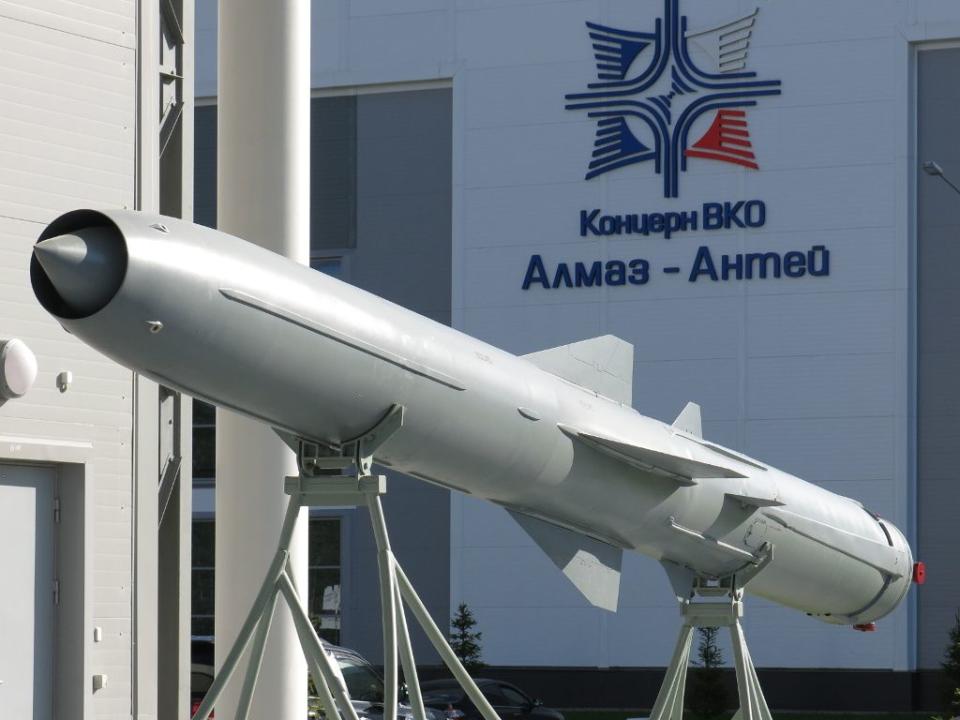
The 3.3-ton Oniks (“Onyx”)—also designated the 3M55, and referred to by its NATO codename SS-N-26 Strobile—is distinguished from earlier Russian/Soviet supersonic missiles like Moskit, Kh-22, or anti-ship Kalibrs by its ramjet propulsion, which uses the onrushing air from supersonic speeds for compression to combust fuel. This simpler jet engine type allows for very efficient travel at supersonic speeds, but helps little with actually attaining those supersonic speeds in the first place.
The problem was solved by including a solid-fuel rocket booster inside the engine, which boosts the missile to supersonic speed before being ejected, giving the ramjet the supersonic airflow needed to function. Sustained high speed is intended to help an Oniks survive the gauntlet of air defenses defending U.S. Navy warships to deliver its 551-pound warhead.
Oniks missiles are launched vertically and use pressurized gas to tilt roughly in the direction of their targets. The missile can maximize range by flying high to hit targets out to 186 miles, or maximize stealth (thereby reducing interception odds) by skimming low out to around 75 miles.
Once close to target, an Oniks missile searches in a 90 degree arc for its targets (ordinarily, ships) with a two-mode radar seeker. It can either passively (ie. stealthily) home in on the target’s own active radar emissions, or it can (less discretely) beam its own jam-resistant active radar waves to detect ships up to 31 miles away by their physical radar signature. That second mode can also theoretically identify and lock onto large enough land targets—like, say, a grain silo or a cathedral.
Platforms that can employ Oniks include Russian Navy missile corvettes, attack submarines and frigates, and its land-based Bastion-P and Bastion-S coastal defense battery.
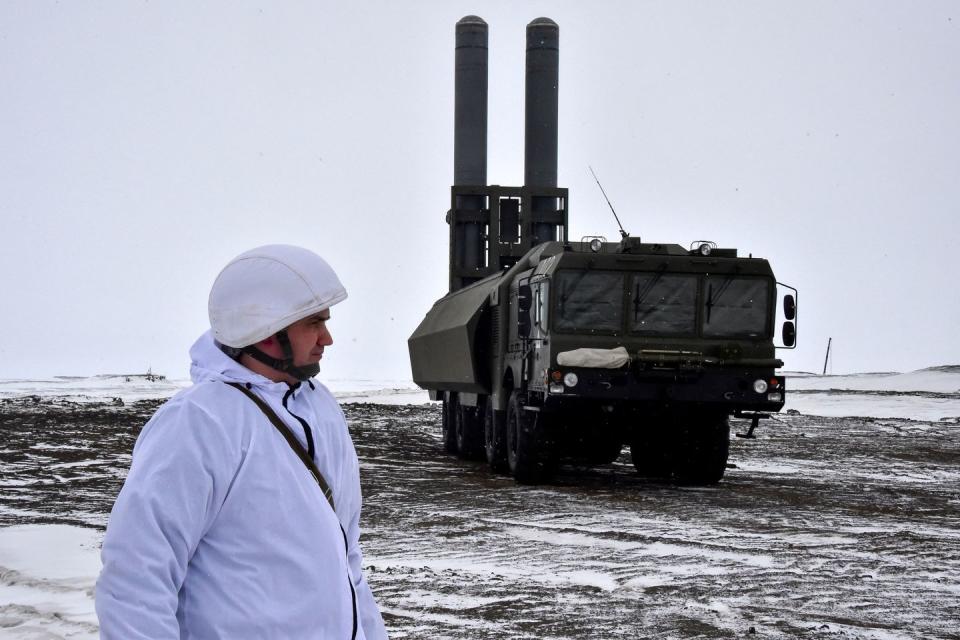
A Bastion-P battery has four 8x8 K340P truck-based launchers carrying two missiles each, supported by four more trucks carrying two missile reloads and a K380P 6x6 command vehicle. The batteries depend entirely on external radar and surveillance assets to locate targets and provide targeting coordinates. At least three Bastion batteries are based on Anapa island in the Black Sea, while the rarer silo-based variant (Bastion-S) is built into a cliffside for the Utyos coastal defense fort.
Bastions units served in mixed brigades—alongside the Bal mobile coastal defense system—using shorter-range, subsonic Kh-35 missiles (81 or 160 miles), which have also been repurposed to attack targets in Ukraine. Bal and Bastion systems striking Ukraine may either come from the 15th Coastal Missile Brigade and 854th Coastal Missile Regiment based in Sevastopol in Crimea or, less likely, the more distant 11th Coastal Missile brigade in Utash, Russia.
At sea, 10 and counting ‘coastal’ Project 21631 Buyan-M class corvettes can carry Oniks—as can four more blue-water capable Project 22800 Karakurt (“Black Widow”)-class corvettes (eight more have been launched but aren’t yet commissioned), and the sole Gremyashchiy-class multi-role corvette. These small vessels can mix in P-800s alongside Kalibr cruise missiles in the eight cells of their UKSK vertical launch systems.
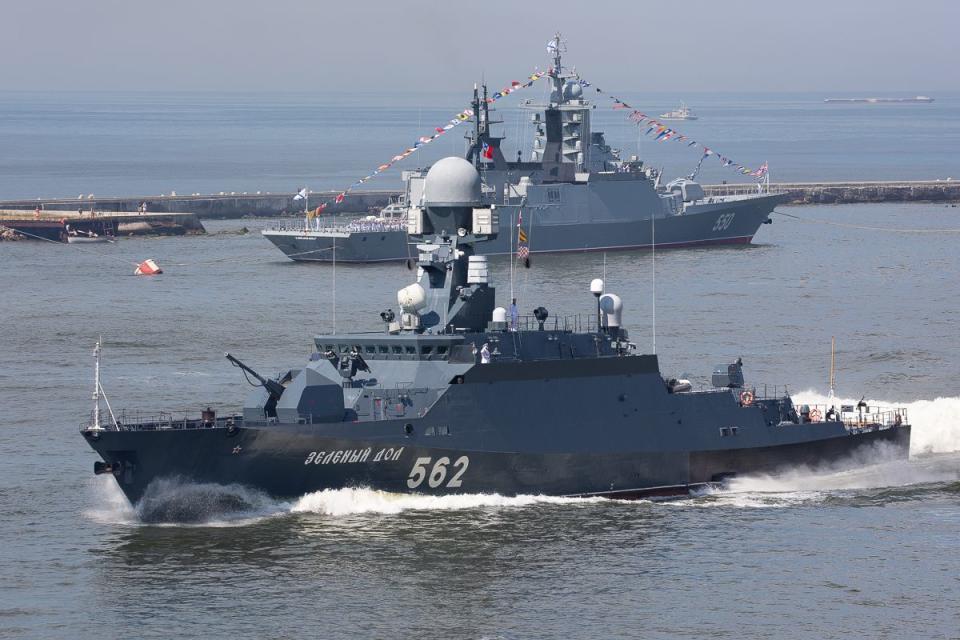
Russia’s three Project 22350 Admiral Gorshkov-class frigates can also carry up to 16 Oniks missiles in their 3S14 VLS cells, while up to 32 of the submarine-launched Bolid P-800 variants can be loaded into the vertical launch systems of Russia’s four latest-generation Yasen-class nuclear-powered attack submarines.
Russia eventually wants to upgrade its two remaining missile cruisers Peter the Great and Admiral Nakhimov to employ Oniks missiles, as well as Oscar-class cruise missile submarines.
By 2019, Russia had also developed an Oniks-M, or 3M55M, variant with range more than doubled to 500 miles—though whether it entered production is unclear. The Oniks itself may eventually be superseded by the even faster 3M22 Zircon anti-ship missile.
Lastly, there’s an export model (Yakhont) arming Indonesian Navy frigates, and Vietnam and Syria have each purchased two Bastion-P batteries. Syria in turn transferred a dozen P-800s to Hezbollah. Russia and India co-developed an improved, multi-role/platform spinoff of Oniks called the BrahMos missile, which is now produced and exported by India.
What Can Ukraine Do?
Russia’s military first reported using Oniks missiles from a Bastion-P system to attack a Ukrainian airstrip near Odesa on April 30, 2022. In the next two months, at least 40 were launched at various target around Odesa, allegedly showing poor accuracy. On July 2, Bastion launchers in occupied Kherson surged a volley of 10 Oniks missiles targeting much-closer Mykolaive—particularly its port facilities, industrial sectors, and agricultural areas.
By November, Ukraine’s defense minister claimed that Russia had launched 123 Oniks missiles at Ukraine out of 470 built, as well as 250 Kh-22 missiles.
Four enemies of the russian missile arsenal:
brilliant Ukrainian air defense forces; inept russian missile forces; sanctions;
time.
Let's demilitarize the terrorist state to live in peace! pic.twitter.com/ndttmXCc22— Oleksii Reznikov (@oleksiireznikov) November 22, 2022
However, Polish defense analyst Jarosław Wolski claims that Russia has produced 800-1,100 Oniks, including around 100 exported. Production of the missile, thought to cost roughly $1.25 million per unit, has attained at least as high as 55 annually, and is ongoing.
Ukraine’s defense ministry has been frank that their Soviet air defense systems simply can’t intercept Onyx, which—unlike most other supersonic missiles Russia launches at Ukraine—can sustain extreme speeds while cruising to target, not just during the terminal phase.
Thus, to improve odds of downing Oniks and Kh-22s, Ukraine may consider moving one of its precious Western-supplied Patriot or SAMP/T long-range batteries—or, possibly, shorter-range NASAMs batteries—to protect the Odesa area. But doing so would still run the risk of exposing those batteries, or Kyiv, to future Russian attacks.
And even deployed, Western defenses would still face challenges. Mena wrote to Popular Mechanics:
“Such [supersonic] missiles are known by NATO leaders to be difficult to intercept. In simulating launch of supersonic Kalibr and Oniks missiles by supposed enemy forces (aggressors) Exercise Polaris in 2021, Western air defense systems were struggling a lot to repel them despite detecting them. Their great speed is a big challenge in determining the point of interception and tracking.”
Polaris simulated a missile attack on a French Navy carrier taskforce supported by five additional NATO warships. Within 15 minutes of the exercise’s debut, the French force lost four frigates (sunk or crippled), with 200-400 sailors as casualties.
A New Black Sea Grain Deal?
To underline Moscow’s threats to civilian shipping in the Black Sea, last Friday, the Tarantul III-class corvette Ivanovets fired an old (but huge) P-270 Moskit missile. It demonstratively sank former Ukrainian anti-submarine corvette Ternopil, which was stolen from Ukraine when Russian troops seized Crimea in 2014.
#Navy The Ivanovets missile boat of the🇷🇺BSF carried out live firing of anti-ship cruise missiles at a target ship at a training area in the NW part of the Black Sea.The target was a decommissioned Grisha-Class ASW corvette,and it was probably one of the former ships of the🇺🇦Navy pic.twitter.com/se8ZVNYi8E
— Capt(N) (@Capt_Navy) July 21, 2023
The White House has also reported intelligence that Russia’s military is considering deploying naval mines to sink merchant ships that may be modified to give the impression they’re of Ukrainian origin.
However, most economic analysts believe that Russia is simply trying to extort a more favorable grain deal, such as allowing insurance for Russian carriers, reintroduction of Russia to the SWIFT international banking system, and increased allowance for Russian fertilizer exports.
In fact, Russian exports greatly increased in volume last year, despite yielding decreased profits. Thus, forecasters expect that Putin will inevitably relent and sign onto a new safe passage agreement to avoid grave economic consequences.
Meanwhile, Russia’s new strikes targeting Odesa seek to cause maximum economic damage to Ukraine. Ukraine, meanwhile, has warned that in absence of a deal, Russian merchant shipping or warships imposing a blockade in the Black Sea could also be at risk—presumably to Ukraine’s indigenous Neptune and U.S.-supplied Harpoon anti-ship cruise missiles, as well as drone kamikaze boats.
You Might Also Like
